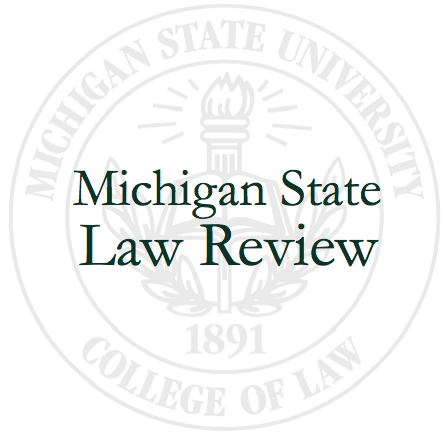Clearing Up the Uncertainty Around Joint Employer Status Under the Fair Labor Standards Act
Mitch Zolton, Notes Editor (‘20)
In April 2019, the Department of Labor (DOL) proposed a new rule that should relieve franchisors of a source of anxiety they have held for years: uncertainty surrounding joint employer status.[1] Ever since the D.C. Circuit affirmed the National Labor Relation Board’s (NRLB) 2015 decision in Browning-Ferris Industries, franchisors and entities with similar affected business arrangements have been unsure to what extent their involvement in the business operations of their franchisees would expose them to liability from their franchisees’ violations of the Fair Labor Standards Act (FLSA). However, the DOL intends to remove the ambiguity by amending the definition of joint employer for the first time in over 60 years.[2]
The FLSA establishes employers’ obligations with respect to minimum wage and overtime rules and imposes liability on employers who violate them.[3] Damages for violating these rules can be severe. Liable employers must not only pay all unpaid wages but may also be liable for liquidated damages in the same amount.[4] Moreover, multiple employers may be subject to liability from FLSA violations under a joint employer theory. When violations persist for months or years and affect multiple employees, employer liability can escalate quickly.[5] Therefore, knowing the parameters of how joint employer is defined and applied is crucial for any business the regulation may impact.
In 2018, the D.C. Circuit caused significant apprehension for franchisors across the country when it affirmed the NLRB’s 2015 decision in Browning-Ferris, which held that a business may be a joint employer if it possesses reserved authority to control the essential terms of a person’s employment, without ever actually exercising that authority.[6] Under Browning-Ferris, the NLRB or a court could hold a franchisor liable for the minimum wage and overtime violations of its franchisee.[7] However, the court left many in the franchise industry confused when it held that unexercised, indirect control is relevant to a joint employer analysis, but failed to clarify the type(s) of unexercised control that may be sufficient for finding joint employer liability, if any.
The Browning-Ferris decision elicited various reactions from franchisors, who were left guessing at what exactly could trigger liability under the new standard. Some franchisors became more involved in the operations of their franchisees to ensure FLSA compliance.[8] Conversely, some franchisors reduced their involvement to avoid joint employer status, causing their franchisees to outsource certain services previously provided by their franchisors, such as providing sample employee handbooks.[9] Regardless of how individual franchisors responded, industry participants claim the new joint employer standard has caused “significant operational and economic harm to franchising, both for franchisors and franchisees.”[10]
In April, DOL responded to the uncertainty created by the Browning-Ferris decision by proposing a rule with a new joint employer definition.[11] Under the proposed standard, a putative employer must actually exercise authority to:
1. Hire or fire employees;
2. Supervise or control the employee’s work schedules or conditions of employment;
3. Determine the employee’s rate and method of payment; AND
4. Maintain the employee’s employment records.
Additionally, the proposed rule explicitly identifies certain business relationships and practices as being irrelevant to determining joint employer status. For example, whether a business operates as a franchisor, chooses to provide a sample employee handbook to a franchisee, or requires particular safety measures or sexual harassment policies are all irrelevant for a joint employer analysis under the proposed rule.[12] Ultimately, DOL believes that the rule will provide business entities with clearer standards to guide their decision making and to “ensure employers and joint employers clearly understand their responsibilities under the FLSA.”[13]
On January 12, 2020, the DOL announced that the joint employer regulation is now final and will be effective March 16, 2020.
____
[1] Highlights of the Notice of Proposed Rulemaking (NPRM): Joint Employer Status Under the Fair Labor Standards Act (FLSA), U.S. Dep’t. of Labor, https://www.dol.gov/agencies/whd/flsa/2019-joint-employment/faq#7 (last visited Dec. 10, 2019).
[2] Fact Sheet: Notice of Proposed Rulemaking on Joint Employer Status under the FLSA, U.S. Dep’t. of Labor (Apr. 2019), https://www.dol.gov/whd/flsa/jointemployment2019/joint-employment_factsheet.pdf.
[3] 29 USC 216(b).
[4] See Romualdo P. Eclavea, Liquidated Damages for Violation of Wage and Hour Provisions of Fair Labor Standards Act, 26 A.L.R. 607 (1976) (explaining how employers may not have to pay liquidated damages if they show their actions were taken in good faith and they had reasonable grounds for believing their actions did not violate FLSA).
[5] See United State Department of Labor v. Fire & Safety Consulting Services, LLC, 915 F.3d 277, 280 (4th Cir. 2019) (concluding that the employer’s “blended rate” pay scheme failed to sufficiently compensate employees for worked overtime and finding the employer liable for $ 817,902.11 in unpaid wages and $ 817,902.11 in liquidated damages, for a total sanction of $ 1,635,804.22).
[6] Allen Smith, NLRB Chairman Defends Proposal to Define ‘Joint Employer’, SHRM (Feb. 2019) https://www.shrm.org/ResourcesAndTools/legal-and-compliance/employment-law/pages/joint-employer-proposal-defended.aspx.
[7] Id.
[8] Id.
[9] Jennifer Carson, Franchising Sector Says Browning-Ferris Cost It $33B Annually, HR Dive (Feb. 5, 2019), https://www.hrdive.com/news/franchising-sector-says-browning-ferris-cost-it-33b-annually/547618/.
[10] Id.
[11] Fact Sheet: Notice of Proposed Rulemaking on Joint Employer Status under the FLSA, U.S. Dep’t. of Labor (Apr. 2019), https://www.dol.gov/whd/flsa/jointemployment2019/joint-employment_factsheet.pdf.
[12]Allen Smith, NLRB Chairman Defends Proposal to Define ‘Joint Employer,’ SHRM (Feb. 2019), https://www.shrm.org/ResourcesAndTools/legal-and-compliance/employment-law/pages/joint-employer-proposal-defended.aspx (describing how one franchisor stopped providing employee handbooks to franchisees, causing the franchisees to hire lawyers to draft and review employee handbooks).
[13] Fact Sheet: Notice of Proposed Rulemaking on Joint Employer Status under the FLSA, U.S. Dep’t. of Labor (Apr. 2019), https://www.dol.gov/whd/flsa/jointemployment2019/joint-employment_factsheet.pdf.

